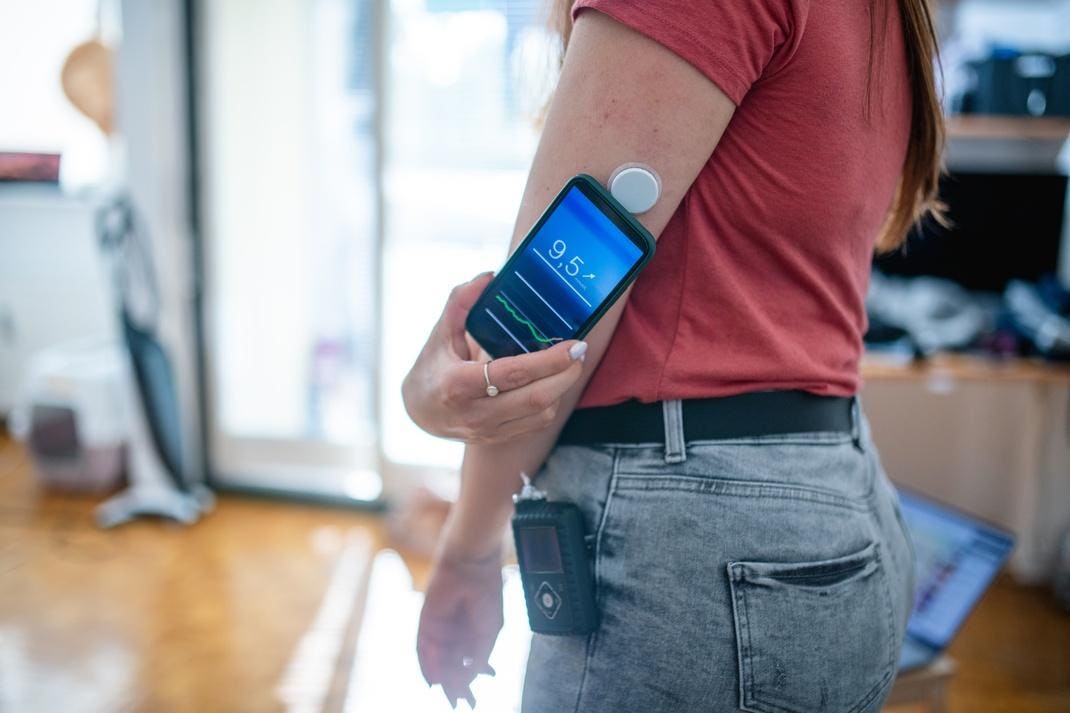Hundreds of thousands of people in England and Wales will get access to “life-changing” diabetes technology for free over the next five years through the country’s public health system.
Experts said on Tuesday that “hybrid closed loop” insulin pumps were a cost-effective measure and should be rolled out for many people with Type 1 diabetes.
Often called an “artificial pancreas” after the organ that normally produces insulin, the systems continually measure blood sugar levels and automatically deliver insulin in response.
They can be better at keeping sugar levels in check than other methods like manual injections, research has shown.
This means they may keep people with the disease healthier for longer by preventing some of the painful and costly complications higher blood sugar levels can cause.
What is Type 1 diabetes?
People with Type 1 diabetes do not produce enough of a hormone called insulin, which moves sugar from the blood into the other cells of the body.
The disease is different to Type 2 diabetes, in which patients become less sensitive to insulin. Around 90% of people with diabetes have Type 2.
Without insulin, blood sugar levels quickly rise, leading to serious side effects. People with Type 1 diabetes must take insulin regularly to stay alive.
But it’s difficult to dose insulin correctly, as blood sugar levels and sensitivity to the hormone are influenced by many factors. Patients need to consider all manner of variables from food intake to exercise to stress — even the temperature of their environment — when figuring out how much insulin to take.
Too little, and blood sugar levels can increase, causing short term effects like thirst and fatigue. If they remain very high, patients can develop a potentially fatal condition called diabetic ketoacidosis within hours.
In the long term, consistently high blood sugar levels greatly increase the risk of complications like heart disease, blindness, kidney problems and nerve damage.
But taking too much insulin is also dangerous, as it can send blood sugar levels very low, very quickly. This can lead to symptoms like confusion, chills, sweating, shaking and an inability to communicate properly.
What are ‘hybrid closed-loop systems’?
Hybrid closed loop systems — which build on other recent innovations in diabetes tech — should reduce the amount of arithmatic patients need to do every day to work out their doses.
They use a continuous glucose monitor, an insulin pump and an algorithm to automatically calculate and deliver the right amount of insulin to keep a patient’s sugar levels balanced.
They don’t yet completely mimic a pancreas, however, because patients still need to input information about the food they eat and the exercise they take.
Professor Jonathan Benger, chief medical officer at the National Institite for Health and Care Excellence, which made the recommendations, said: “Using hybrid closed loop systems will be a game changer for people with Type 1 diabetes.
“By ensuring their blood glucose levels are within the recommended range, people are less likely to have complications such as disabling [low blood sugar], strokes and heart attacks, which lead to costly NHS care.
“This technology will improve the health and wellbeing of patients, and save the NHS money in the long term.”
Who will be eligible for the tech?
Under the new recommendations, anyone in England or Wales with Type 1 diabetes who is under-18 or pregnant should be offered the technology.
Any adult with the condition who has average blood sugar levels above a certain threshold despite best management with either a traditional pump or continuous glucose monitoring, should also be offered the tech.
Organisations like Diabetes U.K. welcomed the recommendations, which are less stringent than those published in draft guidance earlier this year.
“This was something that we and many others called for during the consultation, to offer hybrid closed-loop to as many people as possible and reduce the impact of inequalities, so it is very welcome to see this reflected in the final guidance,” the charity said in a statement.
The tech will be rolled out in phases over the next five years, with efforts initially focused on children, pregnant people, and those already on traditional insulin pumps.
Consistent funding will be crucial for the roll-out, with decisions over provision of the tech still ultimately down to local commissioning bodies.
Although these bodies should fund medicine and technology in line with NICE’s guidelines, in practise, some lag far behind others.
Diabetes U.K. has called for top-down funding agreements between national commissioners and government to ensure the tech is available no matter where patients live.
The charity’s chief executive Colette Marshall said: “Hybrid closed-loop technology has the potential to transform the lives of many people with Type 1 diabetes, improving both health and quality of life.
“However, funding to rollout this technology to the people that need it is of paramount importance and we re-iterate [our] campaign call… for government and the National Health Service to agree this.”
Read the full article here





